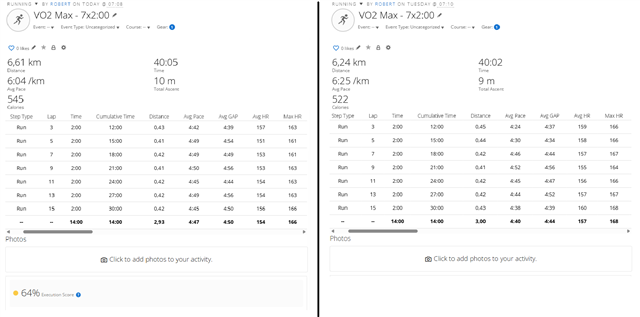Garmin Folks, Forum Guys, first of all I would like to say that DSW is an outstanding tool and great feature. I've been using it for more than a year on daily basis. I made significant improvement to my health, well-being and my running capabilities. Big thank you for this feature. It is a must-have for every amateur and intermediate runner.
My first DSW year was based on HR and I recalculated my HR zones from HR max to LTHR during the year. The second change was implemented by Garmin. They changed anaerobic intervals from HR to pace.
I started to struggle with my VO2 Max runs. According to Garmin my HR Max is 185 bpm, LTHR 164 bpm but it's really hard for me to break the barrier of 170 bpm. My last VO2 Max run based on HR had execution score 0% because I was barely in Z5 below 170 bpm. The target was 176bpm which seems insane because I'm not able to convince my ticker to such hard work.
So I changed my DSW to pace and my first VO2 Max run had target pace 4:45. All interval runs was in target window except recovery runs because I wanted to drop my HR. Therefore execution score was 64%.
But the problem is that those two runs were almost identical. In fact, my DSW based on pace run was slightly slower. In my humble opinion there is something fundamentally wrong with algorithms or with my ticker. Average pace, average HR and max HR was on the same level therefore HR target should be much lower to match my real capabilities or pace target should be higher and I should push insanely more than that to reach 176 bpm.
My questions are:
1. Should I push more and stay on HR based DSW?
2. Should I stay on pace based VO2 Max Intervals because Garmin is not capable of calculate HR target properly?
3. Is there a chance to recalculate my target HR for VO2 Max intervals to real achievable values from pace based runs?
Edit: All runs with HRM Pro+



